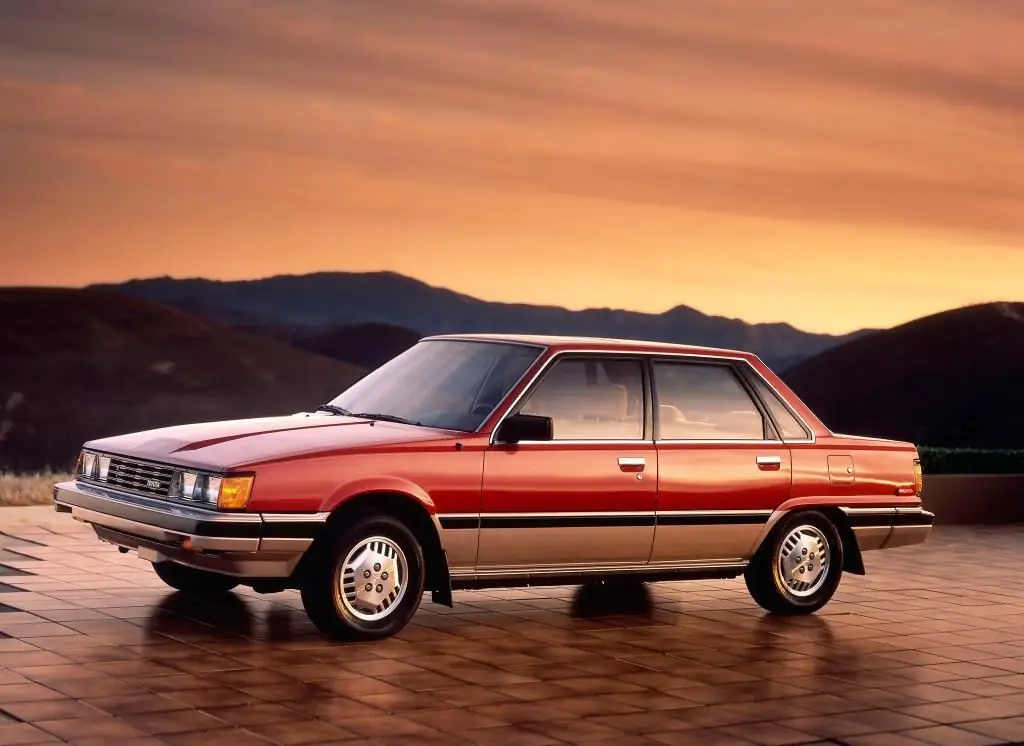2025 Author: Erin Ralphs | [email protected]. Last modified: 2025-01-22 21:14:14
The first military trucks were significantly different from what is being created now. Even during the Great Patriotic War, the so-called multi-purpose vans, various kinds of staff vehicles and mobile repair trains gained particular popularity.
It was the war that accelerated the development of mechanical engineering, and further brought it to a higher and more perfect level. In order to satisfy all the desires and needs of the army, specialized vehicles are needed. Thanks to the interest of the military departments, vehicles such as military trucks were produced at an incredible speed, and each time it became more and more perfect.

When compared with the first samples of technology, modern transport seems to be something unusual and high-tech.
ZIL-135 "Hurricane"
The ZiL-135 LM "Uragan" reactive system was originally designed to destroy armored and lightly armored vehicles, small motorized infantry units and tank detachments. ZiL-135 LM is used as the base machine,whose characteristics are suitable for this task.

Development history
Initially, the car was developed by the ZIL enterprise, and the ZIL-135L model differed from other vehicles of the enterprise by the presence of an automatic transmission. The 135th model has a six-speed hydromechanical gearbox. Initially, such units were developed and produced by one of ZiL's highly equipped tool subsidiaries.
BAZ could not make such GMF due to the fact that there was no specialized equipment, for this very reason it was necessary to urgently create a new transmission. This time the car was equipped with a five-speed manual, which was perfect for working with the YaMZ engine. This design has been finalized, as a result of which the value of the gear ratios has changed. For normal and well-coordinated operation of the transmission and the power unit, the designers installed a double-disk clutch. To solve synchronization issues, paired control units were created.

During the winter, the design bureau successfully completed the development and alteration of the new chassis. On March 4, 1963, the first, with a mechanical transmission, ZIL-135 LM car was presented. The chief designer was Ph. D. L. P. Lysenko. Due to the change in transmission, speed and traction decreased slightly, but in the end the car became more economical.
Chassis
Just like its predecessor, the new ZIL-135 LM has twocarburetor motors. This is a V-shaped engine with 8 cylinders of the ZIL-375Ya model. At the same time, the power of each of the power units was 180 "horses". For better cooling, two radiators were installed along the sides of the compartment with power units, the fans of which were each driven by their own motor. To drive each of the electric motors, two generators from the tank were installed. ZIL-135 LM is the first military truck to have a completely new ignition system.

Features
The shielded ignition system made it possible to separate the work of the two engines. In the event that one of the motors fails, the machine will not lose mobility. Even one power unit allows the combat vehicle to reach the base without loss of speed, as well as cross-country ability. There was not a single case when this car was returned to the base with the help of a tugboat. This has never happened even in Afghanistan.

Using Twin Motor
The use of a system of two engines on the ZIL-135 was caused by the unwillingness to increase the level of reliability of this rolling stock. The main reason was that at the time of the creation of the military machine in the entire USSR there was not a single automobile power unit that would be distinguished by such great power. Despite this, reliability has indeed become several times higher than that of its predecessor. The main disadvantage is the level of fuel consumption, it was simply catastrophic. In this regard, there were a lot of complaints.

Tropical variant
For countries with a tropical climate, a special export version of the ZIL-135 LMT was created. The main difference between this instance and the base vehicle is a reinforced cooling system, as well as specially designed sealed electrical equipment. The appearance has also changed, ZIL was painted in sand color. Along with all the changes, the program also included a specialized chassis with two batteries. It is worth noting that four batteries are installed in the base machine. The design has changed, as well as the fastening of the covers in the engine compartment. These fasteners are required for mounting an additional charging machine brand TZM 9T29.
Prototype
The new prototype of the lightweight modernized chassis 135 LMP was created in 1972. This chassis was designed as a universal vehicle. The prototype differed from its predecessor by improved shock absorbers, as well as a more powerful brake booster. There was also a new heater in the car. The improvement affected the appearance, a new casing appeared, which housed additional equipment. It was placed behind the front part of the cab lining. After the tests, a control fuel consumption was established, which has already increased to 100 liters per 100 kilometers. Along with this, the power reserve decreased, it became equal to 520 km.

Conclusion
The truck completely suited the military from a technical point of view, but with the opinion of scientists involved inthe development of new prototype variants of it could not be ignored. For example, the modification of the ZIL-135 E remained as a prototype, despite the improved technical characteristics. For the 135E, the chassis of the 135L base vehicle was modified, which was eventually equipped with a torsion bar suspension on both the front and rear wheels. This vehicle was practically devoid of the shortcomings of previous prototypes, but for unknown reasons it did not go into production.
Recommended:
Photo and review of the technical characteristics of the car GAZ-322173

Cars of the Gazelle series have been produced in Russia since 1994. Now there are several dozen of their modifications. These are both cargo and passenger vehicles. Consider one of the models - GAZ-322173, specifications, photos and features of this car
Car operation is Types, characteristics, categories, depreciation and fuel consumption calculations, features of work and technical use

Logistics of road transport is an important factor in technical operation systems and is a process of supplying automobile enterprises with rolling stock, units, spare parts, tires, batteries and materials necessary for their normal operation. Proper organization of logistics plays a crucial role in improving the use of vehicles by keeping them in good condition
433360 ZIL: general information, history, technical characteristics and cost of the car

This article will talk about a fairly well-known car of the ZIL series - 433360. We will touch on a little history of the creation of this car, then we will talk about technical characteristics and finish the article with a conversation about the cost of a car in our time
Snowmobile "Buran": technical characteristics, fuel consumption, price and photo

The article describes the Buran snowmobile, the technical characteristics of the engine and some components of this manufacturer. It also describes the problems that you may encounter
Toyota Camry lineup: the history of the creation of the car, technical characteristics, years of production, equipment, description with photo

Toyota Camry is one of the best cars made in Japan. This front-wheel drive car is equipped with five seats and belongs to the E-class sedan. The Toyota Camry lineup dates back to 1982. In the US in 2003, this car took the first position in sales leadership. Thanks to its development, already in 2018, Toyota released the ninth generation of cars in this series. Model "Camry" is classified by year of manufacture

